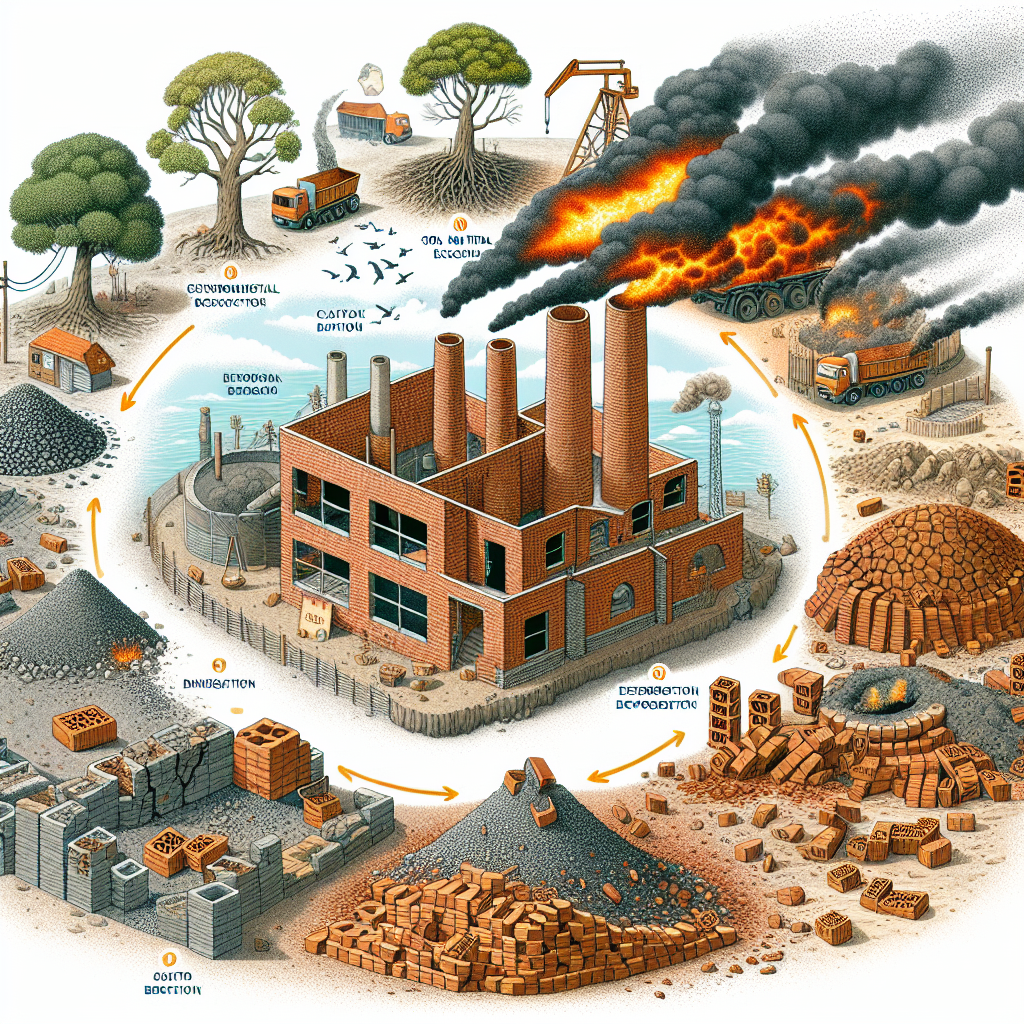Clay bricks have been a staple in construction for centuries. Their durability and aesthetic appeal make them a popular choice even today.
However, the production and use of clay bricks come with environmental implications. From the extraction of raw materials to the firing process, each step leaves a footprint.
In this article, we delve into the environmental impact of clay bricks. We'll explore the production process, the role of technology, and the lifecycle of a clay brick.
We'll also discuss sustainable practices in the industry and how we can balance tradition with environmental responsibility.
The Basics of Clay Brick Production
The production of clay bricks begins with the extraction of raw clay. This process can impact local ecosystems and deplete natural resources.
Once extracted, the clay is moulded into bricks. This is often done using a clay brick moulding machine, which increases efficiency.
The moulded bricks are then dried to remove moisture. This is a crucial step before firing.
Finally, the bricks are fired in a kiln at high temperatures. This process solidifies the bricks but also consumes significant energy.
Taylor Clay Brick: A Case Study in Quality
Taylor clay brick is a well-known brand in the industry. They are recognized for their quality and durability.
Their bricks are made using a precise manufacturing process. This ensures a consistent product that meets high standards.
Despite their quality, the environmental impact of Taylor clay bricks is similar to other brands. This is due to the energy-intensive production process.
Advancements in Manufacturing: The Clay Brick Moulding Machine
The clay brick moulding machine has revolutionized brick production. It has increased efficiency and consistency in the manufacturing process.
These machines automate the moulding process. This reduces the need for manual labor and increases output.
However, these machines also consume energy. This adds to the environmental impact of clay brick production.
Despite this, the benefits of automation in terms of efficiency and consistency cannot be overlooked.
Energy Consumption and Emissions in Brick Firing
The firing process of clay bricks is energy-intensive. It requires high temperatures, leading to significant energy consumption.
This process also contributes to air pollution. Emissions from kilns during firing can have a negative impact on air quality.
However, modern technology can help reduce these emissions. More efficient kilns and cleaner energy sources can mitigate this environmental impact.
The Lifecycle of a Clay Brick: From Cradle to Grave
A clay brick's lifecycle starts with extraction. The impact on local ecosystems from clay extraction is a crucial consideration.
The brick's longevity is an environmental benefit. It reduces the need for frequent replacements, minimizing waste.
At the end of its life, a clay brick can be recycled. Proper disposal or recycling avoids landfill waste and further reduces environmental impact.
Sustainable Practices in Clay Brick Production
Sustainable practices in clay brick production are gaining traction. Using renewable energy sources for kilns is one such practice.
Innovations in clay brick composition also improve sustainability. Adding organic materials can reduce the environmental impact.
Using local clay reduces transportation emissions. It also supports local economies.
Consumer demand plays a role too. It drives more sustainable clay brick production practices.
Conclusion: Balancing Tradition and Environmental Responsibility
The environmental impact of clay bricks is a complex issue. It involves balancing the cultural heritage of clay brick buildings with modern environmental standards.
The future of clay bricks lies in sustainable construction. Technological advancements and regulations can help reduce their environmental impact.











.jpg)

.jpg)


0 Comments